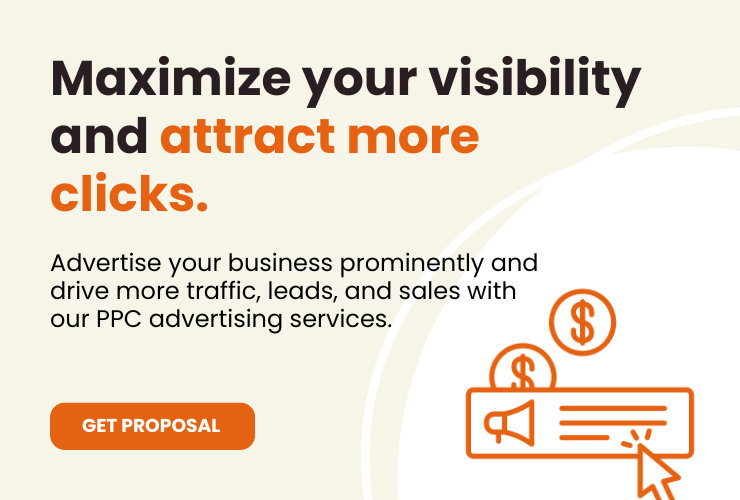Optimizing Google Ads is super important for anyone doing online marketing. If you don’t keep an eye on your campaigns, you might end up spending a lot without seeing good results. Even if you have great ads, an awesome landing page, and the perfect audience, your campaign can still fall flat without proper optimization.
Overview
Understanding the Importance of Google Ads Optimization
Optimizing Google Ads is crucial for any marketer. Your campaign can quickly eat through your ad budget if left alone to grow stale. Even with the best-written ad copy and a jaw-dropping landing page, you might still see less-than-ideal performance without proper optimization.
Common Pitfalls of Unoptimized Campaigns
Without optimization, your Google Ads campaign can suffer from several issues:
- Wasted budget on ineffective keywords
- Low click-through rates
- Poor ad placement
- High cost per acquisition
Benefits of Continuous Optimization
Continuous optimization ensures your campaigns remain efficient and effective. This means checking every piece of the Google Ads puzzle, from keywords to ad copy, to landing pages, and targeting options. By doing so, you can achieve better results with the same budget, making your marketing efforts more cost-effective.
Regularly optimizing your Google Ads can be a crucial success factor in your overall marketing performance.
Effective Keyword Strategies for Google Ads
When you launch a Google Ads campaign, you should be careful about the keywords you pick. Rather than focusing on short keywords, also look at long-tail keywords (keywords that are around 3-5 words long). In particular, it’s wise to focus on long-tail keywords with intent. These would include “buy,” “purchase,” and “quote.”
Negative Keywords: What and Why
Once you’ve decided which keywords to exclude, let’s do a 180 and think about some that you might want to include. Negative keywords help you avoid showing your ads to people who are unlikely to convert. This can save you money and improve your ad performance.
Long-Tail vs. Short-Tail Keywords
Long-tail keywords are longer and more specific keyword phrases that visitors are more likely to use when they’re closer to making a purchase. Short-tail keywords are shorter and more general. Long-tail keywords often have lower search volume but higher conversion rates.
Remember, a high-performing ad comes from both A/B testing and competitor research. When you have written an ad that has good ad relevance, expected CTR, and auction time ad quality, you’ll also have the benefit of a good ad rank.
Enhancing Ad Copy and Headlines
Creating compelling headlines is crucial for grabbing attention. Test headline variations to see which ones resonate most with your audience. Include popular keywords in your headlines to improve relevance and compel users to click on them. Make your headlines and descriptions unique to stand out from competitors.
A/B Testing Ad Copy
A/B testing is essential for optimizing ad copy. Change one element at a time, like the headline, to see what impacts performance. For example, Leasecake increased their conversion rate by 67% and decreased their CPA by 34% through prudent ad copy A/B testing.
Utilizing Emotional Triggers
Using emotional triggers in your ad copy can make it more engaging. Highlight benefits, features, and promotional offers to connect with your audience. Remember, a high-performing ad comes from both A/B testing and competitor research.
Evaluating your testing is easier when you make small changes to your ads at a time. This way, you’ll know exactly what resulted in the change you saw.
Related: Bing ads vs Google ads. Which is right for you?
Optimizing Bids and Budget Allocation
Automated bidding strategies can save you time and help you achieve your goals more efficiently. Google Ads offers several automated bidding options like Target CPA, Target ROAS, and Maximize Clicks. These strategies use machine learning to adjust your bids in real-time, ensuring you get the best possible results for your budget.
Manual vs. Automated Bidding
Choosing between manual and automated bidding depends on your campaign goals and resources. Manual bidding gives you more control but requires constant monitoring and adjustments. On the other hand, automated bidding uses algorithms to optimize your bids, freeing up your time for other tasks. Consider starting with automated bidding if you’re new to Google Ads.
Budget Allocation Tips
Effective budget allocation is crucial for maximizing your campaign’s performance. Here are some tips:
- Set clear goals for each campaign.
- Prioritize high-converting ads to meet sales goals.
- Use CPM bidding for brand awareness campaigns.
- Adjust bids for high-CTR, high-converting copy.
- Decrease bids for low-CTR or low-traffic copy.
Remember, Google Ads budget optimization is about strategically managing and allocating your advertising budget to maximize the effectiveness and efficiency of your campaigns.
Leveraging Ad Extensions for Better Performance
Ad extensions are a powerful tool that can significantly enhance your Google Ads campaigns. By providing additional information and links, they can make your ads more appealing and relevant to potential customers. Using ad extensions can lead to higher click-through rates (CTR) and improved ad visibility.
Types of Ad Extensions
There are several types of ad extensions you can use to improve your ads:
- Call extensions
- Location extensions
- Sitelink extensions
- Price extensions
Best Practices for Ad Extensions
To get the most out of ad extensions, it’s important to use them effectively. Here are some best practices:
- Use all relevant ad extensions available.
- Regularly review and update your ad extensions to ensure they are active and applicable.
- Test different types of ad extensions to see which ones perform best for your campaigns.
Measuring the Impact of Ad Extensions
To understand the effectiveness of your ad extensions, you need to measure their impact. This can be done by monitoring key metrics such as CTR, ad rank, and conversion rates. By analyzing these metrics, you can make data-driven decisions to optimize your ad extensions further.
Better ad relevance: Ad extensions can help improve the relevance of your ads by providing more context and details about your business, products, and services.
Improving Landing Page Experience
Your landing pages play a big part in turning clicks into customers. When someone clicks on your ad, they expect to land on a page that’s relevant to what they saw in your ad. If they don’t immediately find what they expect, they’re more likely to leave.
Mobile Optimization
Make sure your landing page is easy to navigate. Make it quick and easy for customers to perform the action you want them to take—order your product, call your phone number, or submit an inquiry. Don’t make people hunt around for information they might need. Avoid cluttering your site with too many ads or pop-ups.
A/B Testing Landing Pages
Your landing page should also mirror the call-to-action in your ad text. For example, if your ad encourages customers to sign up for a free tour, then you might prominently feature a sign-up form on your landing page. Think of it this way: The connection between your ad and landing page is the bridge between a potential customer and a purchase. The stronger they’re connected (the more directly relevant they are), the better your chances of a conversion.
Optimize your landing pages
- The page loads immediately, without delay
- Visual elements are displayed correctly
- The landing page looks and works well both on desktop and mobile
- The content matches the keywords from the ad
- Your offer is communicated clearly above the fold
- CTA button is displayed above the fold
- The contact form is tested and works with no issues
- Conversion tracking is set up for all converting actions
Discover the key attributes of a stellar landing page experience. Elevate your engagement and conversion rates effortlessly.
Utilizing Advanced Targeting Options
Geotargeting allows you to focus your ads on specific locations. This can be as broad as countries or as narrow as postal codes. Targeting your best-performing locations can significantly improve your campaign’s effectiveness. Adjust your bids based on how well different areas respond to your ads.
Demographic Targeting
Demographic targeting lets you reach people based on age, gender, parental status, and more. By understanding your audience’s demographics, you can tailor your ads to better meet their needs. This helps in creating more relevant and engaging ads.
Remarketing Strategies
Remarketing is a powerful tool to re-engage visitors who have already interacted with your site. By using remarketing lists, you can show ads to people who have previously visited your site, increasing the chances of conversion. This strategy helps in unlocking the power of advanced audience targeting to boost your campaign’s performance.
Advanced targeting options in Google Ads can enhance your digital marketing campaigns, increase engagement, and boost conversions.
Analyzing and Interpreting Performance Metrics
To truly understand the success of your Google Ads campaigns, you need to focus on the right metrics. While popular metrics like click-through rate (CTR) and cost per click (CPC) are useful, they don’t tell the whole story. Conversion rate, quality score, return on ad spend (ROAS), and cost per acquisition (CPA) are crucial for a comprehensive view.
Using Dashboards and Reports
Dashboards and reports are essential tools for tracking your ad performance. They help you visualize data and spot trends over time. Make sure to segment your data by conversion action and look at different date ranges, such as the last 30 days or fiscal year-to-date, to see how your metrics change.
Making Data-Driven Decisions
To optimize your Google Ads, you need to make decisions based on data, not just gut feelings. Focus on actionable metrics rather than vanity metrics. For example, while a high CTR might look good, it’s the actual conversion rate that shows the effectiveness of your ads.
Always keep an eye on your total spend, conversions, and other key metrics to score your campaign against your targets. This will help you understand what’s working well and what needs a boost.
Final Verdict
Optimizing Google Ads is crucial for any marketer who wants to get the most out of their ad budget. Without regular tweaks and updates, even the best campaigns can fall short. By following a structured approach and using the tips shared in this article, you can ensure your ads perform better and reach the right audience.
Remember, it’s all about finding the right balance between cost and results. Keep experimenting, stay updated with the latest trends, and don’t be afraid to make changes. With consistent effort, your Google Ads campaigns can achieve great success.
Work with A Non-sketchy PPC Agency
At Sachs Marketing Group, we specialize in ethical PPC management services that deliver results without the gimmicks. Our team of experts tailors strategies to fit your unique needs, ensuring maximum ROI and campaign success.
Contact us to elevate your PPC efforts and achieve your marketing goals.
Contact us today to get the conversation started!











